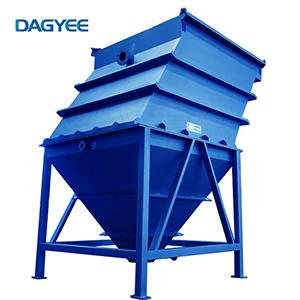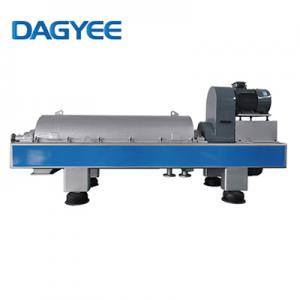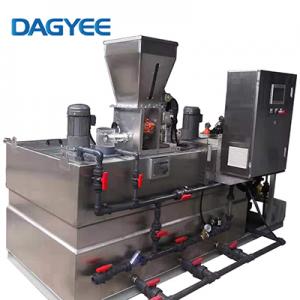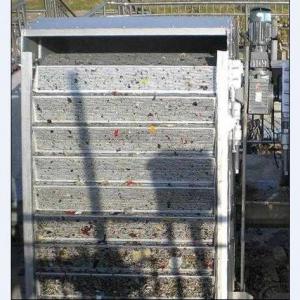Description

Shaftless Screw Conveyor Description
Since there is no center pipe to transmit torque, the shaftless spiral is designed to handle the full-motor torque load of the drive unit. Additionally, since the shaftless spiral has no center pipe for support, replaceable trough-conforming liners are used to evenly support the entire length of the rotating spiral.
The shaftless screw conveyor is mainly used for conveying sludge, screen slag, etc. The conveying direction of the conveyor is determined by the helical direction of the screw blades, and can be conveyed in both directions. The conveyor can be sealed to prevent environmental pollution.
Shaftless screw conveyor is mainly composed of shaftless screw, U-shaped spiral groove, cover plate, lining plate, inlet and outlet, discharge outlet and driving device. Outlet output.
The shaftless screw conveyor is mainly composed of a steel screw without a central shaft, a driving device, a feeding hopper, a conveying trough or a conveying pipe, a discharge port, a frame, etc. The shaftless screw conveyor has internal anti-wear protection. The tubular groove or U-shaped groove of the bushing rotates to generate a pushing effect, so that the material moves forward, so as to achieve the purpose of conveying.
Shaftless Screw Conveyor Structure
Shaftless screw conveyor is mainly composed of shaftless screw, U-shaped spiral groove, cover plate, lining plate, inlet and outlet, discharge outlet and driving device.

Shaftless Screw Conveyor Type

Single shaftless screw conveyor screw shaft, without mixing and stirring functions.
Twin Shaftless Screw Conveyor It adopts double screw blades with mixing and stirring functions. The two screw blades rotate in opposite directions to avoid material blocking. The conveying capacity is 1.5-2 times that of a single shaft.
Inclined Shaftless Screw Conveyor mainly used for conveying materials at a small angle of 25°.
Shaftless Screw Conveyor Technical

|
DLS
Model
|
Capacities
(m3/h)
|
Length | Speed | Size | ||||
| 00 | 150 | 300 | (m) | (r/min) | A(mm) | B(mm) | B0(mm) | |
| DLS200 | 2 | 1.4 | 0.9 | 10 | 20 | 200 | 310 | 270 |
| DLS260 | 3.5 | 2.5 | 1.5 | 10 | 20 | 260 | 370 | 340 |
| DLS320 | 9 | 6.5 | 4.1 | 15 | 20 | 320 | 430 | 400 |
| DLS355 | 11.5 | 7.8 | 5.5 | 20 | 20 | 355 | 465 | 435 |
| DLS420 | 15 | 11 | 7.5 | 20 | 20 | 420 | 530 | 500 |
| DLS500 | 30 | 25 | 21 | 20 | 20 | 500 | 560 | 680 |
Shaftless Screw Conveyor Benefits
- Easy to access and clean;
- Low maintenance;
- Modular components can be easily adapted to various problems (resulting in extremely;
- Versatile conveyor for a variety of difficult materials and high volume applications);
- High self-cleaning.

Shaftless screw conveyors VS Shafted Screw Conveyors
Conveying materials
Shaftless is suitable for conveying sludge, household garbage, grid slag and other viscous, entangled materials and massive materials. It is precisely because the design of the shaftless screw conveyor without a central axis has great advantages for these materials.
The shaft screw conveyor is suitable for conveying materials: powder, small particle materials, etc. If you convey viscous
materials such as sludge, it will stick to the inner tube shaft and blades, and the conveying block materials are easy to jam.
Conveying form
Shaftless screw conveyor is suitable for: horizontal conveying, and the large inclination angle should not exceed 20°, according to the actual usage.
The shaft screw conveyor is suitable for: horizontal conveying, inclined conveying, and vertical conveying.
Conveying capacity
Due to the use of shaftless, the single-machine conveying length of the shaftless screw conveyor can reach 60 meters, and the conveying capacity is 1.5 times that of the traditional shafted screw conveyor with the same diameter

Shaftless Screw Conveyors Application
Shaftless Screw (Spiral) Conveyors are specially designed for handling difficult, heterogeneous materials such as urban solid waste, screenings and floating matter, de-watered, thickened, conditioned sludge, packaged food, creams or pastes, as well as waste from: meat, fish, fruit and vegetable processing.
The main sectors of application are: wastewater treatment, sugarhouse rejects, fish industry, solid waste treatment, fruit and vegetable processing, beverage industry, pulp and paper, chemicals, food industry in general, meat processing plants, abattoirs/ slaughterhouses, restaurants, canteens, catering in general.
Contact us










